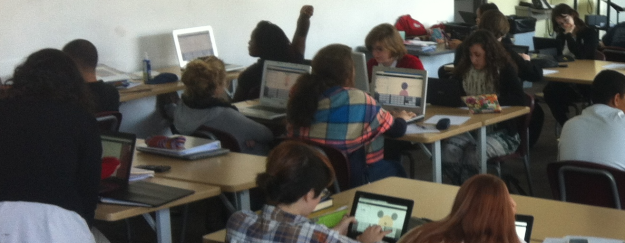Recently, I used this and this Khan Academy activity to test my students’ understanding of graphing inequalities as part of our Linear Functions Unit. Having not broadly used KA before, I wanted to gauge my students’ reaction and try and work out if I should use it more regularly to give me and the student, good feedback. After the activity, I gave a quick Google Form Survey to ask my students what they thought. The results are below:

Other student comments included:
I think this really helps envision the problem, and it really helped me. I would thoroughly enjoy doing this again, although it is kind of hard to maneuver around on it.
I liked the system, but I really hated the fact that we had to get three right in a row, because if you accidentally make a mistake, you can’t go back, you’ve just permanently failed.
It was good for practice but too easy to make technical mistakes. Graphing is harder to do on Khan academy.
This feedback, coupled with talking with students during the activity told me these things:
- We are a Bring Your Own Device (BYOD) school with many varieties of device. Laptops were fine but some tablets were pretty difficult to use with KA. It was hard to move things across the screen
- The instant feedback is awesome and students really enjoyed/were frustrated at (in a good way) knowing immediately whether they got things wrong or right.
- I think in the future, I will mainly use KA for homework where students can do things at their own pace and use their home computers rather than tablets.
- The idea is great but I’m going to have to think about the most useful way to implement it as part of the wider experience, for the student.
Have you used Khan Academy in the classroom. Any good tips on how it can be integrated without the frustrations above?







